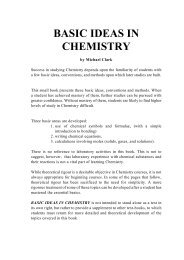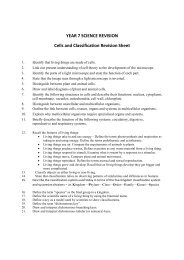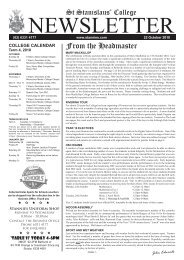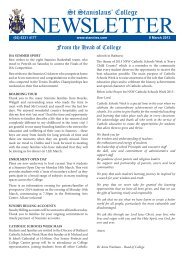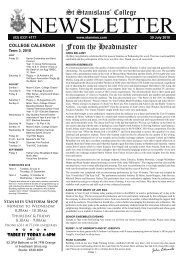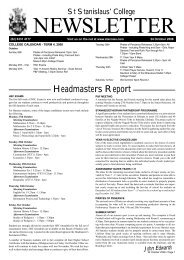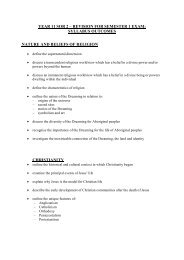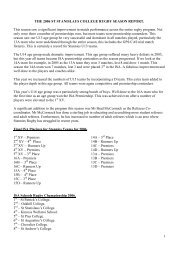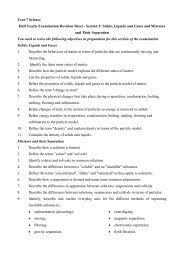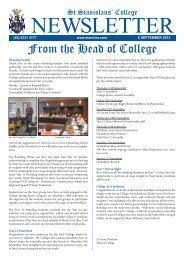Anils Ghost - Xenware.net
Anils Ghost - Xenware.net
Anils Ghost - Xenware.net
Create successful ePaper yourself
Turn your PDF publications into a flip-book with our unique Google optimized e-Paper software.
Crime fiction elementsMany features of the novel allow readers to place it within the crime fiction genre:· It is fictional, (although with awell-researchedbasis in recent history).· It focuses on the elucidation of aparticularcrime, chosen to typify manythousands of others.· It deals with serial crimes: in this case, the frequent, often random, killingscarried out by modern guerillas, undercover government agents and terrorists,the stuff of daily headlines in the 20thand 21stcenturies.· It criticises the corrupt and self-servingserving actions of governments whichoppose the guerillas, often using equally unlawful methods.· Its heroine belongs to a profession whose work is currently fashionable inAmerican crime fiction. [A top name in contemporary crime fiction is KathyReichs, one of only about fifty forensic anthropologists certified by the AmericanBoard of Forensic Anthropology, and author of the very successfulDeja Dead (Arrow1998),Death du Jour (Heinemann, 1999) and Bare Bones(2003)]
Crime fiction elements•Itslocale is detailed, believable, and bound up with the particular nature of thecrime· Its sleuths, the forensic anthropologist Anil Tissera and the archaeologistSarath Diyasena, operate in an atmosphere of fear and personal danger, but arenot deterred from working to uncover the identity of both victim and perpetrators.· Corrupt authorities who shelter or control the perpetrators provide a furtherobstacle.Anil’s <strong>Ghost</strong> clearly fulfils the syllabus prescription for the Crime Fiction elective:The genre of crime fiction has mystery as its key element. The mysteryand its solution by rationality and the careful accretion of evidencemay be the primary focus of the text. This invites the responders’active involvement in the deduction of the solution to the crime.English Stage 6 Prescriptions [p27]
Activity• 1. Using the points from the previous slides,work in pairs to compile a list of examplesfrom the text to support the ideas.• Ensure that page references are provided,quotes where applicable.
Ondaatje’s narrative techniquesIn the same interview Ondaatje acknowledges the influence of popular music on his writing, and his beliefthat every contemporary writer has been shaped by the rhythms and structures of 20thCentury music:“My novels are full of popular songs. The characters spend most of their time reading, singing andsleeping. Popular music has a huge subliminal influence on how we write now. It affects the rhythm of theprose.”Anil’s moods and reactions are often suggested by lines from favourite songs that she recalls.His narrative method in Anil’s <strong>Ghost</strong> is marked not only by agreatfluidity of time, place, and point of view,but also by variety of material. He uses intertextuality, t t interpolating ti some factual material, e.g. from anAmnesty International list of victims of the Sri Lankan political fighting (p 41); and from The National Atlasof Sri Lanka (in summary form, pp 39-40). These carry some of the factual background of the fiction.Most of the interpolated material printed in italics, however, is flashback accounts of events in the previouslives of the characters, particularly Anil, but also more peripheral characters such as Ananda’s murderedwife, Sirissa.At other times, Anil’s past life and that of other characters such as Gamini, Sarath and Palipana arerevealed to the reader in the form of recollected memories, inspired by some happening in the novel’s‘present’, or in the form of conversations recalling the past. He uses also literary allusions, to add aresonance to the narrative by revealing the background of characters such as Palipana, Sarath and Anil. Forthe characters, remembered quotations form a type of bulwark against the threats and horrors of thepresent, an aid in making sense of the world.Authenticity of description applies not only to the minute details of work, e.g. Ananda and the other mineworkers (pp 91 ff). The landscape, the weather, and the daily customs of living are used to give the textureof Sri Lankan life. Ondaatje uses occasional Sinhalese words such as bajaj, diya reddha cloth, pokuna,walawwa. He uses also the device of cumulation, listing one piece of naming, evidence or information afteranother. An example is Sarath’s reflection:“The country existed in a rocking, self-buryingmotion. The disappearance of schoolboys, the death oflawyers by torture, the abduction of bodies from the Hokandara mass grave. Murders in the Muthurajawelamarsh.” (p 157)
Responding to violenceEvery writer of crime fiction has to decide how to present the violence which isusually at the heart of the mystery to be unravelled. Some revel in the physicaldetails of violence and its effects on the human mind and body. Those who dealwith serial killings have repeated chances to show the effects of homicide. Others,such as Ondaatje, choose to distance their narrative from the brutal immediacy,and show the crime’s aftermath rather than the moment of committal.Anil’s <strong>Ghost</strong> is set in a country where three forces are using the weapons of terroragainst their perceived enemies and the helpless general population who are oftentherir victims. Ondaatje shows awareness that he could have made more of theviolence which backgrounds his story than he did. His main characters, because oftheir professional expertise, operate long after the crimes have been committed. Toan extent this removes the story from overt accounts of violence. Even whenSirissa’s death is narrated (pp 172-5) only the preceding time and her horrifiedrealisation of what has happened at the school where she works is revealed indetail to the reader. Our imaginations supply the rest.“Anil’s <strong>Ghost</strong> could have been as brutal as the Sri Lankan terror really was,but it was written from a forensic point of view, it was more like a detectivestory, and was one step removed from the violence. I’m not a violentperson but Iwriteabout what Ifear,to shape it and mute it in away........tore-createviolence exactly as it happens can become pornographic.”[Ondaatje in an interview with Sara Dowse, The Sydney Morning Herald, 23-2424 February 2002]
Forensic characterisationSleuthing--patientlydigging for the facts in order to elucidate the mystery--isat theheart of the novel’s plot.But a parallel forensic investigation is going on: that of the readers as they excavatethe personal lives of the four main characters. Anil and Sarath use their professionalskills as forensic anthropologist and archaeologist to uncover the identity of ‘Sailor’,the recently reburied skeleton found amongst historic archaeological remains in asecure official heritage area. Readers must also use their skills as experienced readersto come to understand not only the characters, but also the way their personalexperiences illuminate much of the essential background to the story. Ondaatje’snarrative method is essentially an indirect one, requiring the reader’s full attention topiece together the mosaic of information that accumulates about the characters as theplot unwinds.The two other major characters, Gamini and Ananda, as well as the minor ones,seem positioned by Ondaatje to reveal some essential facets of Sri Lankan life, ratherthan to directly forward the solution of the mystery. Gamini’s experiences show thehuman cost of war in casualties that overwhelm the hospitals and their exhaustedstaff. Ananda embodies all those village people who suffer but do not themselveswant to become demons, those Ananda calls “spectres of retaliation.” (p 304).Through his characters the writer gives indirectly to the reader his observations onthe events he has witnessed or researched.
• ·ActivitiesWork in small groups to document elements ofOndaatje’s style, including those referred to above. Eachperson should find four or five examples of a particularelement and explain to the group what they add to theeffect of the narrative.• · Cinematic narrative often works by cutting fromone scene to another, juxtaposing them to imply acomment about the events and characters shown.• · Find examples where one scene in the novel isfollowed by another, illuminating the meaning of both.
Celebrating work• The reality of daily work in the lives of his characters is a constant focusin Ondaatje’s fiction. The minute details of the work performed by thefour main characters: Anil, the forensic anthropologist, Sarath, thearchaeologist, Gamini, i the emergency hospital doctor, and Ananda, theartist and artificer, are described with care. For much of the sections ofthe novel dealing in turn with each of their lives, descriptions of theirwork dominate the narrative.• To a large extent, the reader is positioned to share their preoccupation,working to achieve a clear understanding of what they do. The reward forthe reader is the finding of clues to the mystery yat the heart of the book:the crime committed against ‘Sailor’, the identity of the perpetrators, andthe reasons for this and countless other crimes.• In these sections of the narrative, the detailed preparation Ondaatjeundertook becomes apparent. One character who appears as himself inthe novel is the distinguished American forensic anthropologist, ClydeSnow, who is thanked in the credits. Ondaatje’s references to humanrights investigations in Guatemala, as recalled by Anil, are based on hisown visits to that country to observe forensic anthropologists at work.Anil flies to Miami to meet her lover, Cullis on a break from such work“with the forensic team in Guatemala” (p 33). She is exhausted but sowholly absorbed b in this work that t even in sleep he noted “her handmoving constantly as if brushing earth away” (p 34).
Celebrating work• Clyde Snow• The status of Clyde Snow as an eminent forensic anthropologist is clear from the list of ‘skeletalconfirmations’ he is credited with. These include John F. Kennedy; the men who died in General Custer’s‘last stand’ in 1875; the famous Nazi war criminal, Dr. Josef Mengele, who had escaped to live in Brazil;the Egyptian boy king, Tutenkhamun; the victims of the Oklahoma bombing; and the victims found inmass graves at tV Vukovar, in the former Yugoslavia.• Dr. Snow has worked to uncover forensic evidence for various human rights groups, in parallel with Anil’swork, where one body must stand for thousands “to give him a name would name the rest.” (p 56) Heled the forensic work in Argentina which led to the conviction of five officers from the formergovernment’s infamous ‘death squads’. A biographical note states: “Hundreds of officers were involved ofcourse, but this is a start. More than anything, his work has brought these atrocities to the surface,where the bodies have to be dealt with and questioned by the public and governments.”• Many web sites have further information. The source quoted here is from Clyde Snow• The brothers Gamini i and Sarath, too, almost never leave the world of work. The exhausted doctor cansleep only within the ambience of the hospital, stretching out in the children’s ward. They havecolleagues and mentors, but seem now to be without close family or friends. Similarly, Anil breaks withCullis, violently and suddenly, on a later visit to him in Borrego Springs (pp 100-101). 101). She is still mentallyabsorbed in the forensic work from which she has taken a short break. She recalls this incident soon aftershe hears Paalipana describing the ritual of painting the eyes of the Buddha. “The artificer brings lifesight and truth and presence”, he tells her (p 99). This painstaking work foreshadows the work Anandawill do to reconstruct the face of Sailor’s skull, and so help reveal his identity.• Ananda in many ways represents the ordinary people of Sri Lanka, both in his suffering and in hisworking life. The arduous and dangerous manual work he and other gem miners do is detailed (pp 91-3).After the death of his wife the work, and drinking after it, wholly absorb him. His almost mythic task asthe artificer who paints the eye of the statue is memorably detailed in the novel’s finale (pp 304-7. Thissection typifies the way Ondaatje depicts the precise skills and rituals people develop to carry out theirprofession, craft or trade.
Searching for truth• The nature of truth, and how and to what extent it becomesknowable, is at the heart of the novel. Characters talk and thinkabout the hidden nature of reality, returning again and again to theconcept and developing and presenting varying ideas about it.• The personal and professional cost of adhering to one’s concept oftruth also becomes clear as the novel unfolds. In discussion as inactionthe characters,particularlySarahand Anil,illuminateopposing concepts of what is in fact knowable.• In Sarath’s view, Anil has a westernised, rational and optimistic viewof what can be made overt after investigation. He considers his ownview is more realistic----hehas to live in a country where competingpowers havetheirownmotivesforsuppressing ordistortingevidence, and where cultural imperatives may drive a differentagenda. This clash of evidence in collision with the power structureis used by the author to create enormous tension in the climacticfinal chapters of the novel.
Key Quotes· Consider each of these comments on the nature of truth. By the end of thenovel, which seems to be most validated?a) ‘Well, kings also caused trouble in those days,’ he said. ‘Even then there wasnothing to believe in with certainty. They still didn’t know what truth was. Wehave never had the truth. Not even with your work on bones.’‘We use the bone to search for it. “The truth shall set you free”. I believe that.’‘Most of the time in our world, truth is just opinion.’ (p 102)b) Half the world, it felt, was being buried, the truth hidden by fear, while the pastrevealed itself in the light of a burning rhodendron bush.Anil would not understand dthi this old and accepted db balance. Sarath thk knew that tf for herthe journey was in getting to the truth. But what would the truth bring them into?It was a flame against a sleeping lake of petrol. Sarath had seen truth broken intosuitable pieces and used by the foreign press alongside irrelevant photographs. (p156)c) ‘You like to remain cloudy, don’t you, Sarath, even to yourself.’…‘I don’t think clarity is necessarily truth. th It’s simplicity, it isn’t it?’‘I need to know what you think. I need to break things apart to know wheresomeone came from. That’s also an acceptance of complexity. Secrets turnpowerless in the open air.’‘Political secrets are not powerless, in any form’, he said. (p 259)
Review- “Ondaatje's Cathartic Vision’by Andrea MacPhersonAnil's <strong>Ghost</strong> is a small, sudden glimpse into the soul of award-winning winning poet and novelist Michael Ondaatje. Inthe much anticipated follow-up to his Booker Prize and Governor General's Award-winning winning novel, TheEnglish Patient, , Ondaatje explores both the extravagant beauty and the horrific civil war of his homeland,Sri Lanka. With swift prose, we are immediately immersed in his cathartic vision of an island's hauntinghistory.Anil Tissera is a forensic anthropologist t returning to her native Sri Lanka to explore the current campaign ofterror and murder brought about by a vast ethnic war near the end of the 20th century. She has beeneducated abroad and has not returned to Sri Lanka in a number of years. She returns to find thecountryside torn apart by mass graves, night patrols and government interrogations. With the help ofSarath Diyasenaa, an archaeologist, Anil discovers bodies, skeletons and the beginnings of complex politicalmystery.Anil and Sarath probe deeper into the mystery of the skeleton they have named Sailor, and find allies inforgotten members of Sri Lankan culture, such as Sarath's brother Gamini, the blind epigraphist Palipanaand his young caretaker, and Ananda, a drunken widower with the abilities to paint death and restructureman. Ondaatje allows the reader to witness Sri Lanka through the dream-like perceptions of thesecharacters.There are images carved into or painted on rock -- a perspective of a village seen from the height of anearby hill, a single line depicting a woman's back bent over a child -- that have altered Sarath'sperceptions of his world. Years ago he and Palipana entered unknown rock darknesses, lit a match and sawhints of colour. They went outside and cut branches off a rhododendron, and returned and set them on fireto illuminate the cave, smoke from the green wood acrid and filling the burning light.These were discoveries made during the worst political times, alongside a thousand little dirty acts of raceand politics, gang madness and financial gain. War having come this far like a poison into the bloodstreamcould not get out.Those images in caves through the smoke and firelight. The night interrogations, the vans in daylightpicking up citizens at random. That man he had seen taken away on a bicycle. Mass disappearances atSuriyakanda, reports of mass graves at Ankumbura, mass graves at Akmeemana. Half the world, it felt,was being buried, the truth hidden by fear, while the past revealed itself in the light of a burningrhododendron bush.
Review- “Ondaatje's Cathartic Vision’by Andrea MacPhersonHowever, don't expect a novel like Ondaatje's previous work, The English Patient, In the Skin ofa Lion and Coming Through Slaughter. With Anil's <strong>Ghost</strong>, , Ondaatje has abandoned some ofthe dense, lush prose. While his trademark poetic language remains, more dialogue andstraight away narrative are included through this latest novel. As Anil's <strong>Ghost</strong> is lessconcerned with the intricate, intimate lives of its characters and more inspired by the heavypolitical climate of his homeland, it is perhaps out of necessity that Ondaatje has chosen touse crisp, clean prose when dealing with a subject as complex as the civil uprisings in SriLanka.There is a constant ebb and flow of characters directly involved with the civil war; thesecharacters range from murder victims to doctors to anthropologists to forgotten artists.While they remain somewhat distanced from the reader, they do serve Ondaatje's purposeof examining i the inhabitants t of this tiny island. However, this tactic ti is not without t fault.Some major plot lines and characters are dealt with too swiftly, in almost a summarymanner as we race towards more political commentary. At times, the characters and theirtenuous lives seem forgotten in the mass of plot and politics compiled within Anil's <strong>Ghost</strong>.In Anil's <strong>Ghost</strong>, , Ondaatje dissects the secret enemies, identity, memory, family and turbulentpast of a lush country caught in the throes of murder, betrayal and warfare. He examinesand unfolds the intricate layers that make up Sri Lanka and its tumultuous inhabitants. Fromthe intensity and urgency of this novel it becomes apparent that the dark history of SriLanka touches Ondaatje close as bone, resulting in a book he was compelled to write. Andwhile this personal purge seems as though it may have been essential for the author, itdoesn't create quite the same journey for the reader. | May 2000
Review- ‘Painting the eyes of a god’By Gary Kamiya"Anil's <strong>Ghost</strong>," Ondaatje's fifth novel (fourth if you count "The Collected Works of Billy the Kid,"which Ondaatje's own publishers seem uncertain how to classify, as a poem), is the mostrestrained and plot-driven of his books. This description is relative, of course: Even asubdued Ondaatje is more of a shape shifter and trickster than 99 percent of his peers. Thepolyphonic elements-- the use of multiple stories of equal or almost equal weight-- that arean Ondaatje trademark are still here, as are the majestic set passages, but for the first timein his career a single story forms the skeleton of the book.And that story unfolds in a much more conventional, suspense-driven form than the plots inOndaatje's other works, which are loose and baggy monsters riddled by poetry andintoxicated by flashbacks, dreamlike tales that fade out more than end. In perhaps the mostdisconcerting development of all, "Anil's <strong>Ghost</strong>" even has a surprise ending.The novel tells the story of Anil Tissera, a 33-year-old forensic anthropologist, who returns forthe first time in 15 years to her native Sri Lanka after living in America. Anil, a veteran ofthe killing fields of Guatemala, Congo and other places -- her work consists of scientificallyanalyzing human remains to determine where and how death occurred -- has come back todo fieldwork and file a report for an international human rights group about the politicalviolence that has ravaged the island for years.The group's investigation is on a short leash, since the government, as well as insurgent groups,is known to be involved in the violence. Anil is assigned to work with an archaeologistnamed Sarath Diyasena, a man in his late 40s whose wife committed suicide some yearsbefore. In the course of their investigation, she discovers that a skeleton found in agovernment-controlled dig site is not hundreds of years old, like the others, but no morethan six years old -- clearly l the remains of someone killed by the government. Anil thinks,"Who was he? This representative of all those lost voices. To give him a name would namethe rest."
CharactersQualities to thesub-genrePurpose inthe textDevices usedto conveyroleEvolution ofC.FThe BigSleepTRIHAnil’s<strong>Ghost</strong>RelatedtextRelatedtext
Other Focuses1. Reflect upon each text and then write a paragraph explaining howeach can be seen to be exploring aspects of the world in whichthey are representing and composed in.• You should be able to develop a series of ideas that illustratesome of the common elements of the texts studied and alsoindicate the contrasts that exist.



